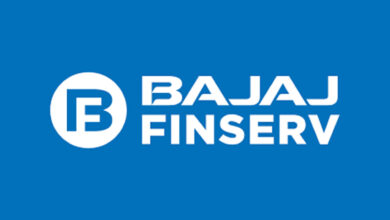The Enigmatic Tapestry of Derailment Drama

In the shadowy alleyways of human experience, where life’s meticulous plans unravel in the blink of an eye, lies the essence of derailment drama. This genre, a poignant mirror reflecting our deepest fears and vulnerabilities, captures the heart’s tumultuous journey through unexpected chaos. It’s a dance with fate, where every step can lead to triumph or tragedy.
The Origins and Evolution
The Birth of Derailment Drama
The seeds of derailment drama were sown in the fertile grounds of ancient storytelling. From Greek tragedies to Shakespearean plays, the themes of sudden downfall and unforeseen disaster have always resonated with audiences. These early tales were the harbingers of what would become a distinct and powerful genre.
Early Examples and Influences
Works like “Oedipus Rex” and “Macbeth” laid the groundwork, showcasing protagonists who grappled with fate’s cruel hand. Their struggles, painted in broad strokes of passion and despair, set the stage for future storytellers to delve deeper into the human psyche.
Modern Adaptations and Innovations
Today’s derailment dramas have evolved, embracing modern sensibilities and technological advancements. Films like “Requiem for a Dream” and series like “Breaking Bad” push the boundaries, exploring the darkest corners of human ambition and desperation. These contemporary classics build on the foundation of their predecessors, weaving complex narratives that captivate and disturb.
Key Elements and Themes
Conflict and Catastrophe
At its core, derailment drama thrives on conflict. The protagonist’s life, meticulously structured, is shattered by unforeseen events, leading to a cascade of catastrophic consequences. This conflict, both internal and external, drives the narrative forward, creating a gripping tapestry of tension and suspense.
Human Emotion and Psychological Depth
Derailment drama delves into the deepest recesses of the human mind. Characters are not mere caricatures but fully realized beings with rich emotional landscapes. Their psychological struggles, raw and unfiltered, invite audiences to walk in their shoes, to feel their pain, joy, and everything in between.
Societal Reflections and Critiques
Beyond personal turmoil, derailment dramas often reflect societal issues. They critique norms, challenge injustices, and hold a mirror to the world, urging viewers to reconsider their perspectives. Whether it’s addiction, corruption, or moral decay, these stories resonate because they touch on universal truths.
Iconic Works and Their Impact
Classic Masterpieces
Films like “Citizen Kane” and “A Streetcar Named Desire” are timeless examples of derailment drama. They explore the fragile nature of human ambition and the destructive power of obsession, leaving an indelible mark on the genre.
Contemporary Classics
Modern masterpieces such as “Fight Club” and “The Social Network” continue to push the envelope. These films dissect contemporary issues, from consumerism to social media’s impact, offering a fresh take on the genre’s themes.
Hidden Gems
There are also lesser-known gems like “Blue Valentine” and “Manchester by the Sea,” which quietly but powerfully depict the derailment of everyday lives. These films, though not as widely recognized, offer profound insights into the human condition.
The Art of Storytelling in Derailment Drama
Narrative Techniques
Crafting a compelling derailment drama requires mastery of narrative techniques. Flashbacks, nonlinear storytelling, and unreliable narrators are often employed to heighten tension and keep audiences guessing.
Character Development
Characters in derailment dramas are richly developed, with complex backstories and motivations. Their journeys are marked by growth, regression, and sometimes redemption, making their stories deeply engaging.
Symbolism and Metaphor
Symbolism and metaphor play crucial roles, adding layers of meaning to the narrative. Everyday objects and settings can take on profound significance, reflecting the inner turmoil of characters and the overarching themes of the story.
The Role of Setting and Atmosphere
Urban Landscapes
Urban settings often serve as the backdrop for derailment dramas, their bustling streets and towering buildings mirroring the chaos within the characters’ lives. The city becomes a character in itself, its relentless pace and anonymity amplifying the sense of isolation and disarray.
Rural Backdrops
Conversely, rural settings can evoke a sense of desolation and confinement. The vast, empty landscapes reflect the characters’ inner emptiness and the inescapable nature of their troubles.
Abstract and Surreal Environments
Some derailment dramas venture into the abstract, using surreal settings to explore psychological landscapes. These environments, unbound by the constraints of reality, allow for a deeper exploration of themes and emotions.
Emotional Resonance and Audience Connection
Empathy and Sympathy
The power of derailment drama lies in its ability to evoke empathy and sympathy. Audiences are drawn into the characters’ struggles, feeling their pain and rooting for their survival, despite the odds.
Shock and Awe
Shock and awe are tools often employed to jolt the audience out of complacency. Unexpected twists and turns keep viewers on the edge of their seats, their hearts racing as they anticipate the next catastrophe.
Catharsis and Reflection
Ultimately, derailment dramas offer catharsis. The emotional rollercoaster leads to a profound release, prompting viewers to reflect on their own lives and the fragile nature of human existence.
The Influence on Other Genres
Cross-Genre Hybrids
Derailment drama has influenced numerous other genres, resulting in intriguing hybrids. From psychological thrillers to dystopian sci-fi, the themes of chaos and downfall find new expressions across the cinematic landscape.
Inspiration and Homage
Many creators pay homage to classic derailment dramas, drawing inspiration from their narrative techniques and thematic depth. This cross-pollination enriches the genre, ensuring its continued relevance.
Influence on Popular Culture
The impact of derailment drama extends beyond film and literature, seeping into popular culture. Its themes are echoed in music, art, and even fashion, reflecting its profound influence on the collective psyche.
The Future of Derailment Drama
Emerging Trends
As the world changes, so does the genre. Emerging trends include the exploration of digital derailments, where characters grapple with the fallout of technological advancements and virtual realities.
Technological Innovations
Technological innovations like virtual reality and interactive storytelling offer new ways to experience derailment drama. These advancements promise to make the emotional journey even more immersive and impactful.
Potential Directions
The future of derailment drama is bright, with endless possibilities for new narratives and explorations. As long as there are stories of human struggle and resilience, the genre will continue to thrive.
Conclusion
Derailment drama, with its intricate tapestries of human emotion and unforeseen chaos, holds a mirror to our own lives. It invites us to confront our deepest fears, to empathize with others, and to reflect on the fragile beauty of existence. In its darkest moments, we find the light of understanding and the solace of shared humanity.
FAQs
What defines a derailment drama?
A derailment drama is characterized by a protagonist’s life being suddenly and dramatically disrupted, leading to a cascade of consequences. It focuses on themes of conflict, psychological depth, and societal critique.
Why is derailment drama impactful?
Derailment drama resonates because it reflects universal human experiences of struggle and unexpected challenges. It evokes strong emotional responses and prompts reflection on personal and societal issues.
How has derailment drama evolved over time?
From ancient tragedies to modern films, derailment drama has evolved by incorporating contemporary issues and technological advancements. It has expanded its narrative techniques and deepened its exploration of psychological and societal themes.
What are some must-watch derailment dramas?
Must-watch derailment dramas include classics like “Citizen Kane” and “A Streetcar Named Desire,” as well as contemporary films like “Fight Club” and “The Social Network.” Hidden gems like “Blue Valentine” also offer profound insights into the genre.
How does derailment drama influence society?
Derailment drama influences society by prompting viewers to reflect on their own lives and societal norms. It challenges injustices, critiques societal issues, and inspires empathy and understanding.



